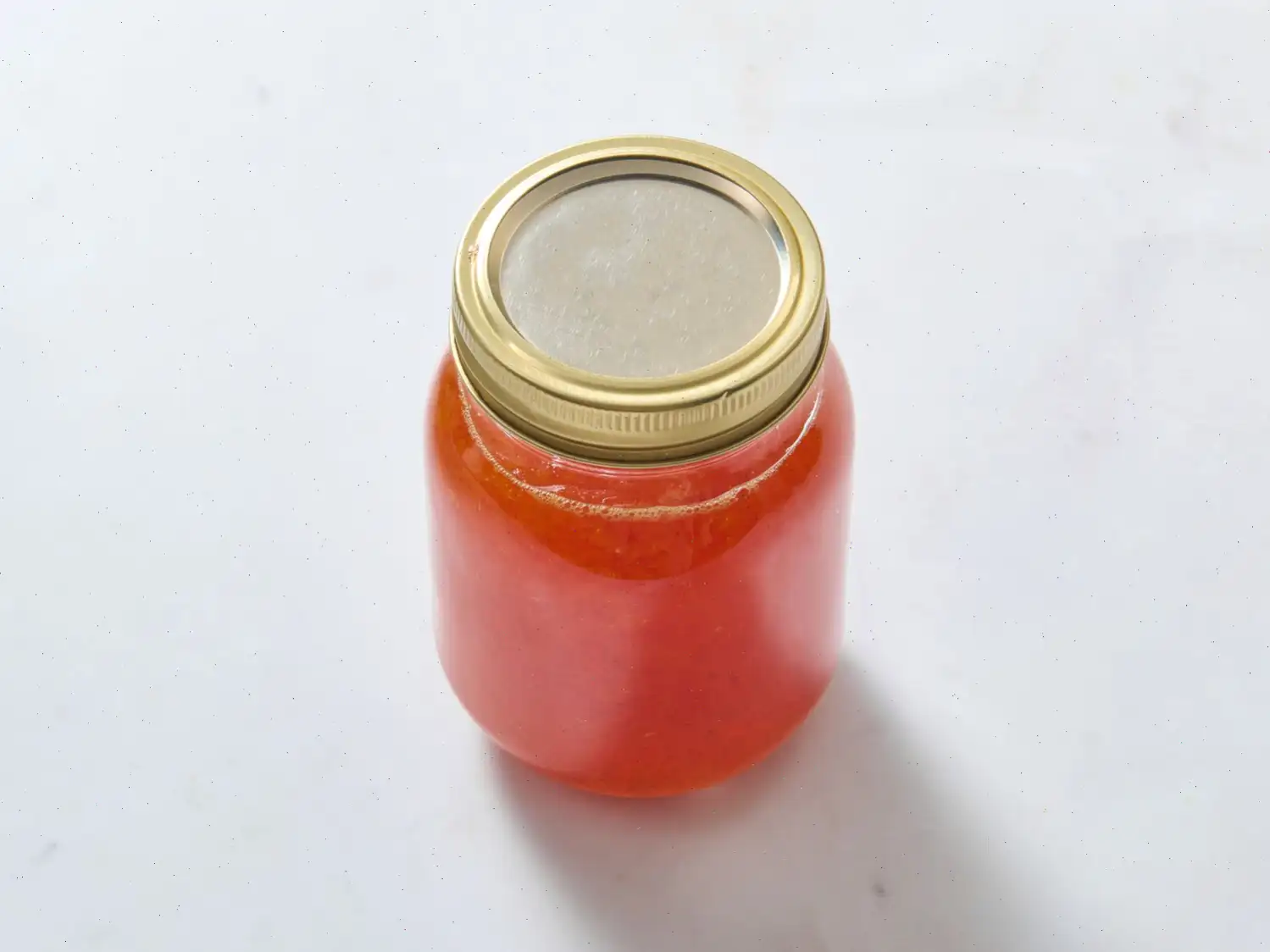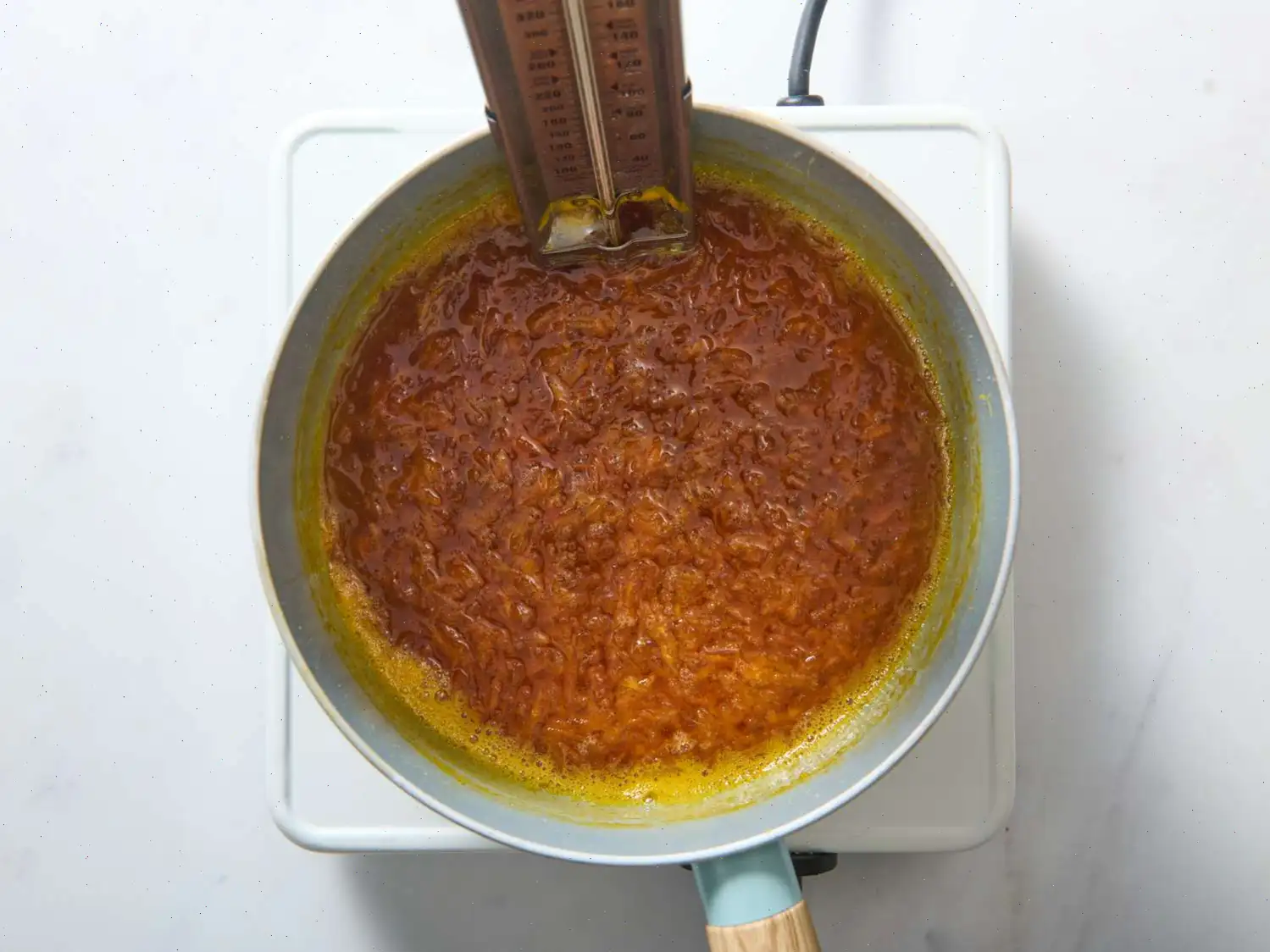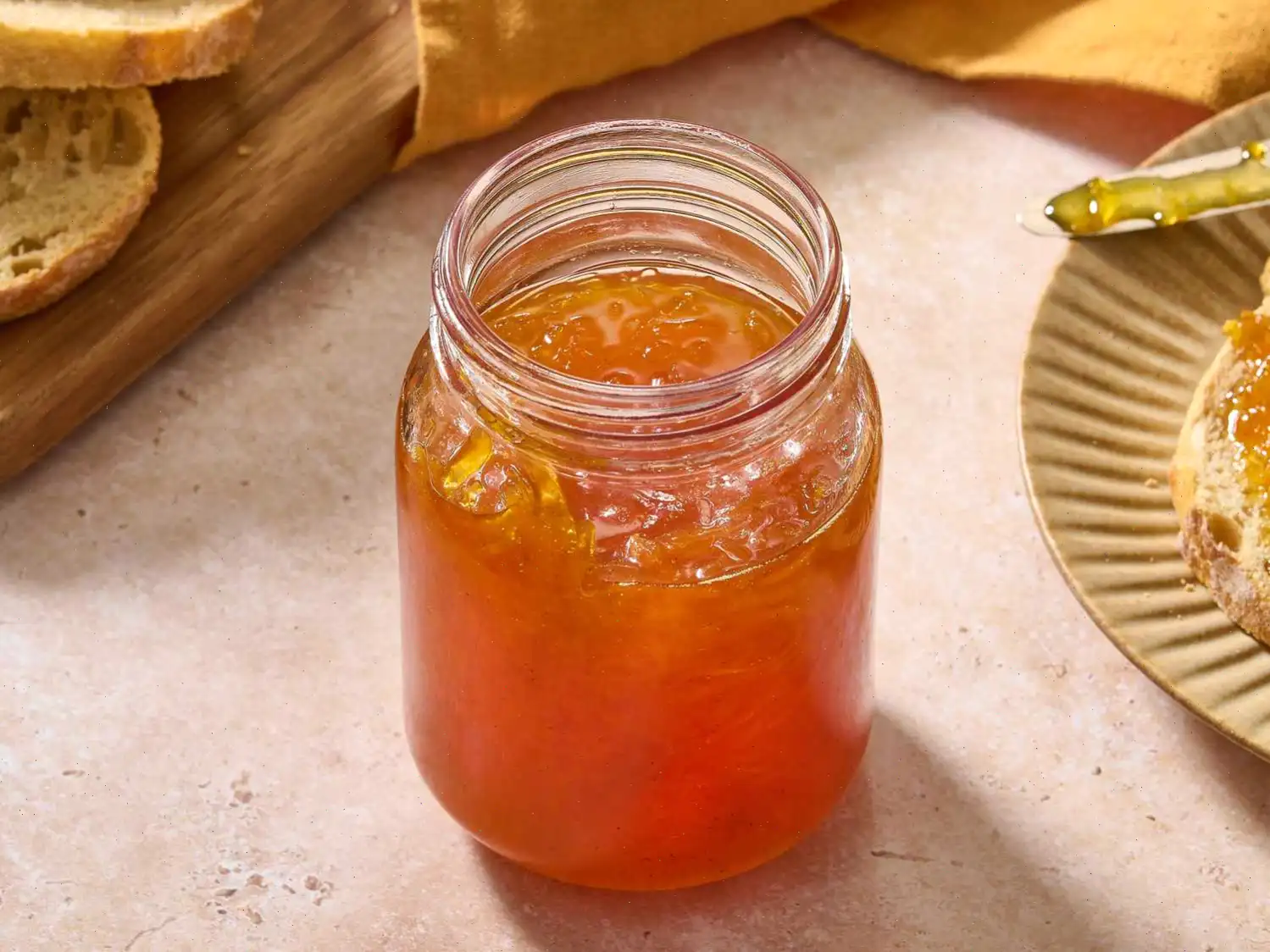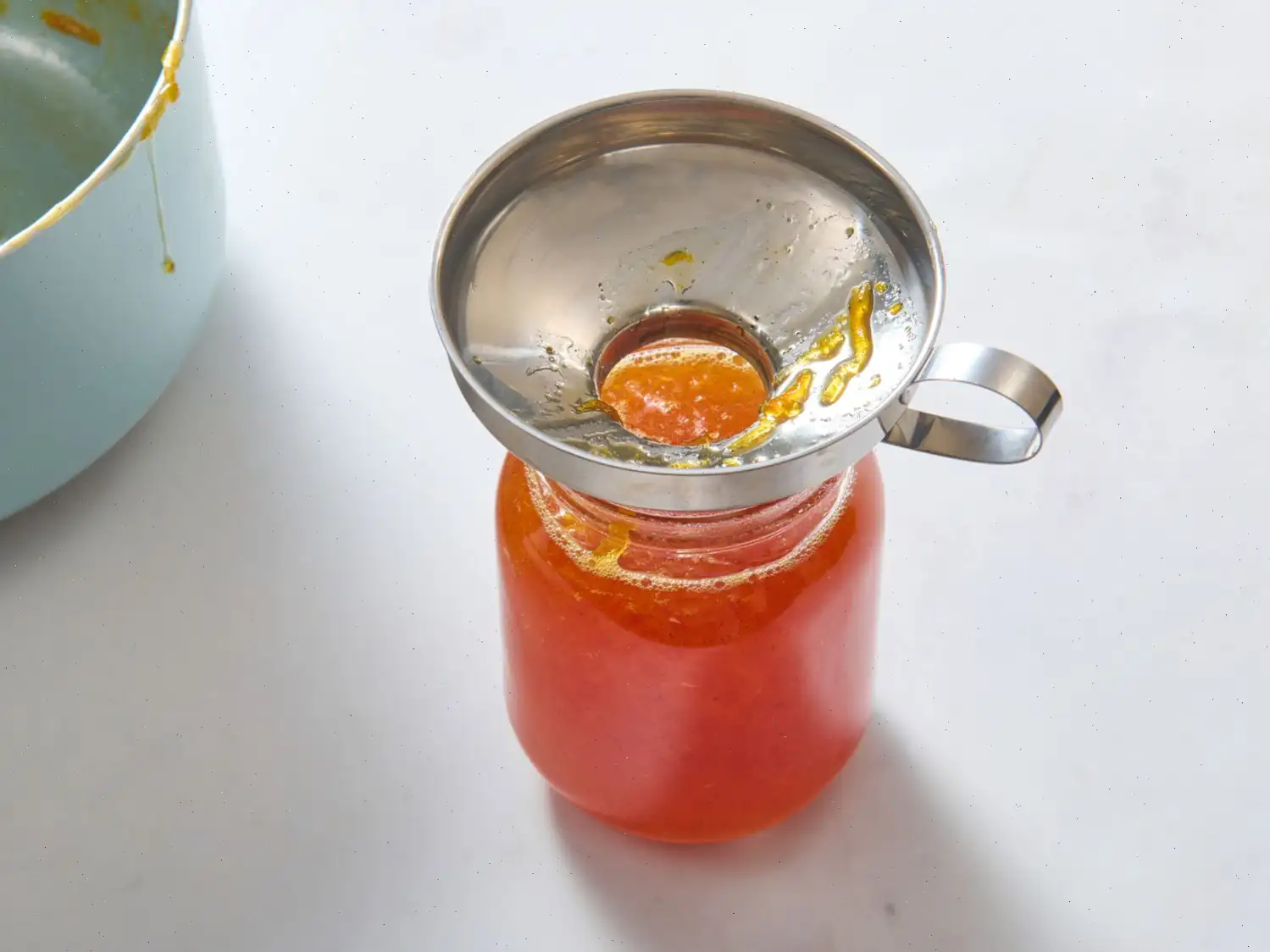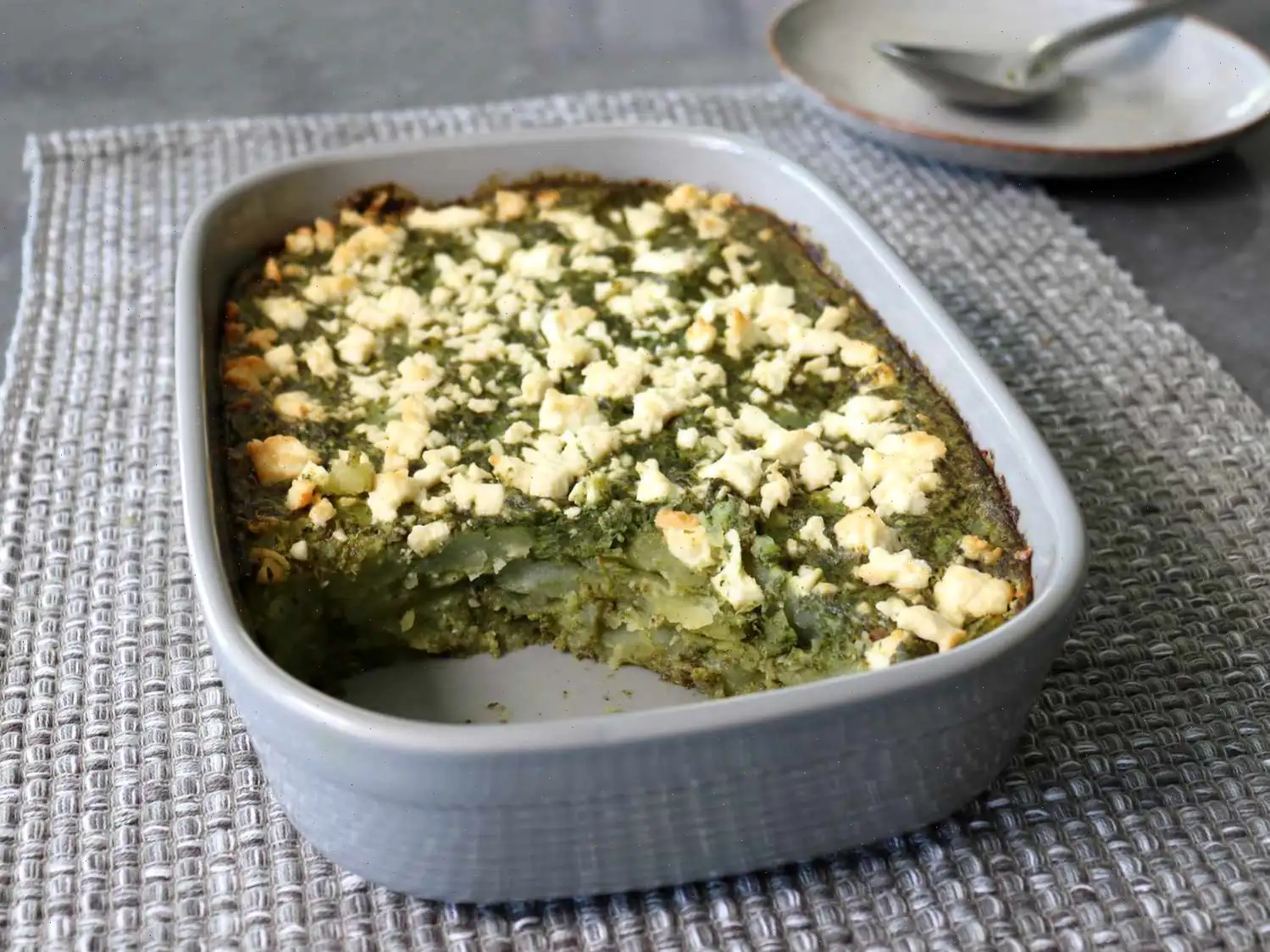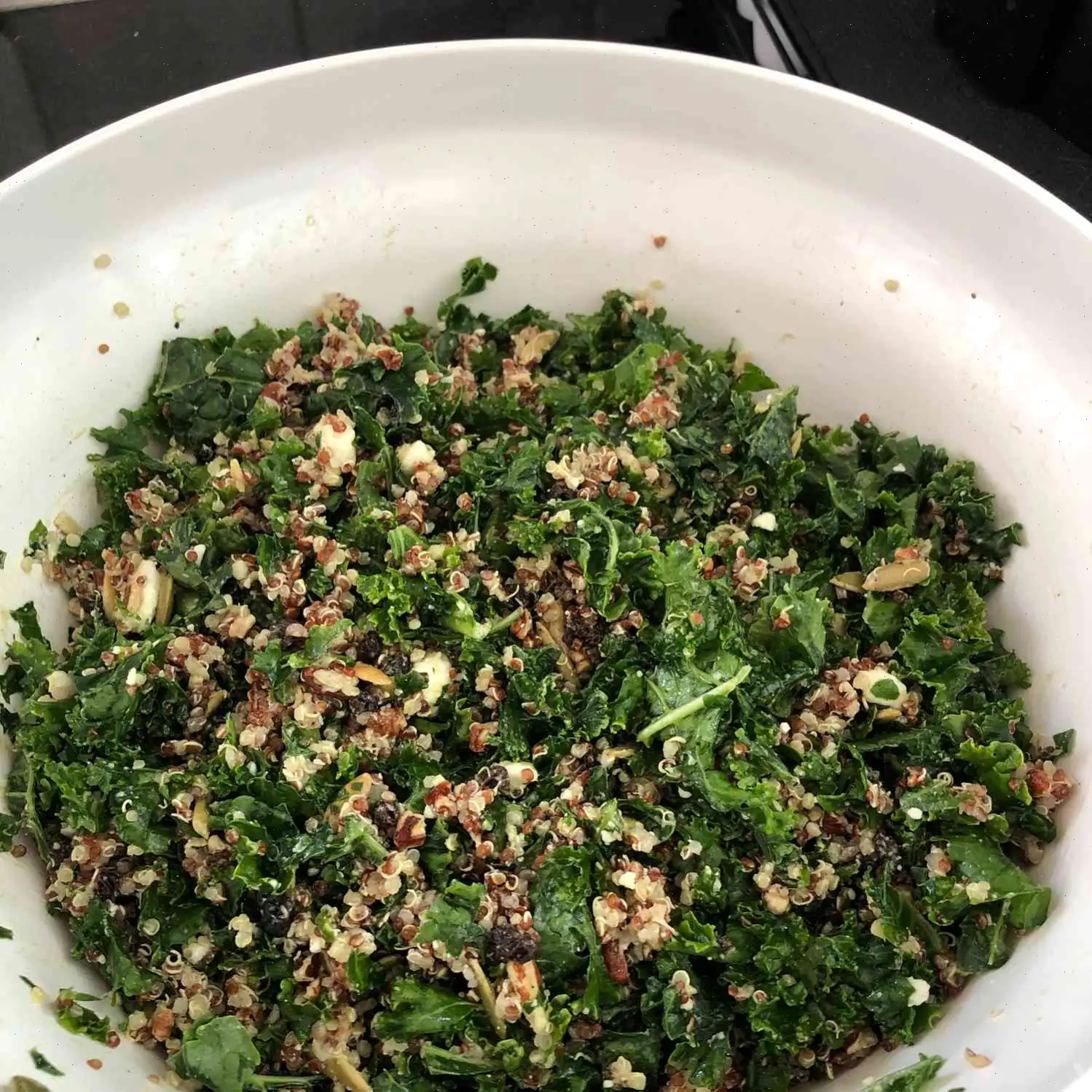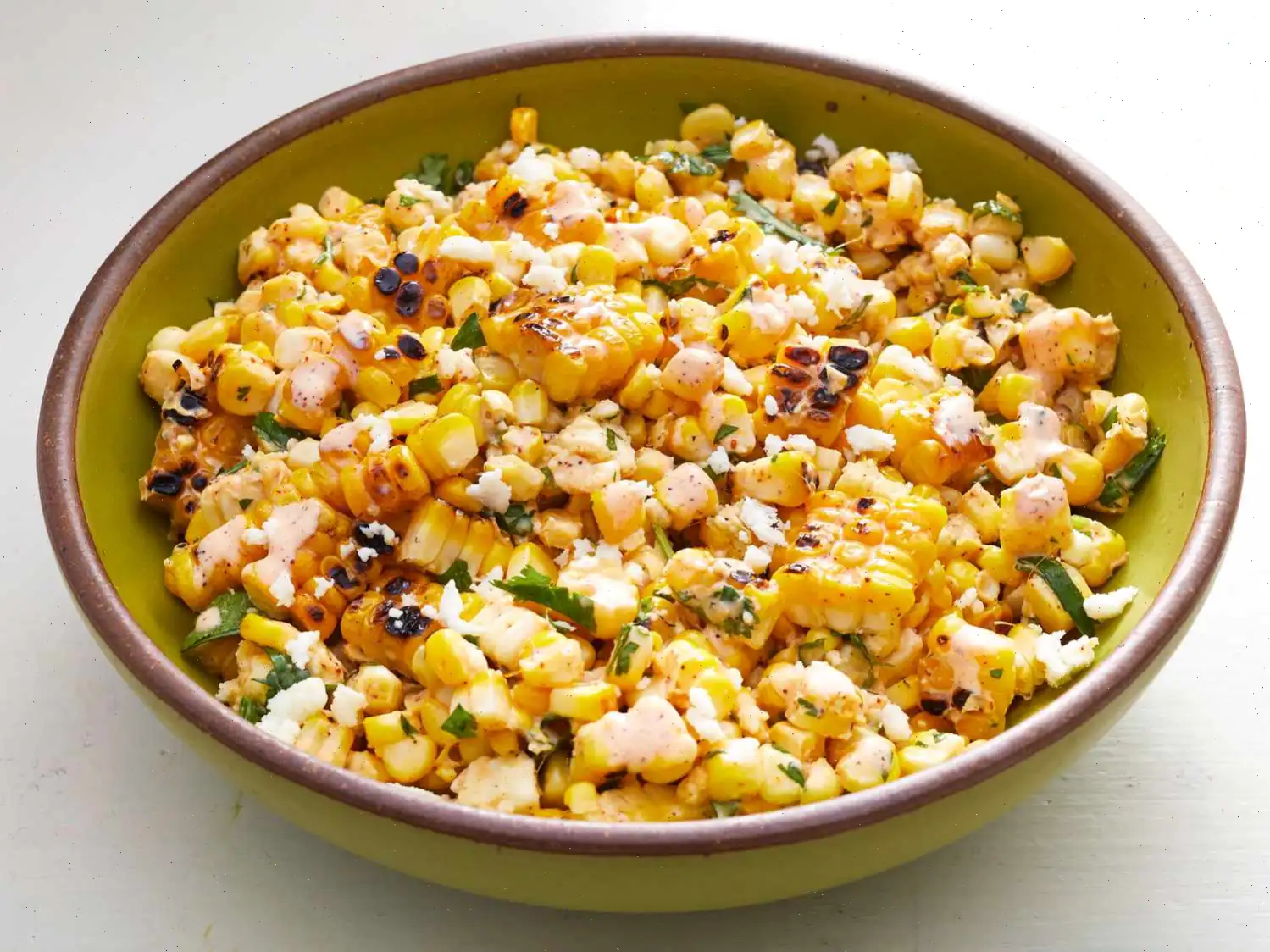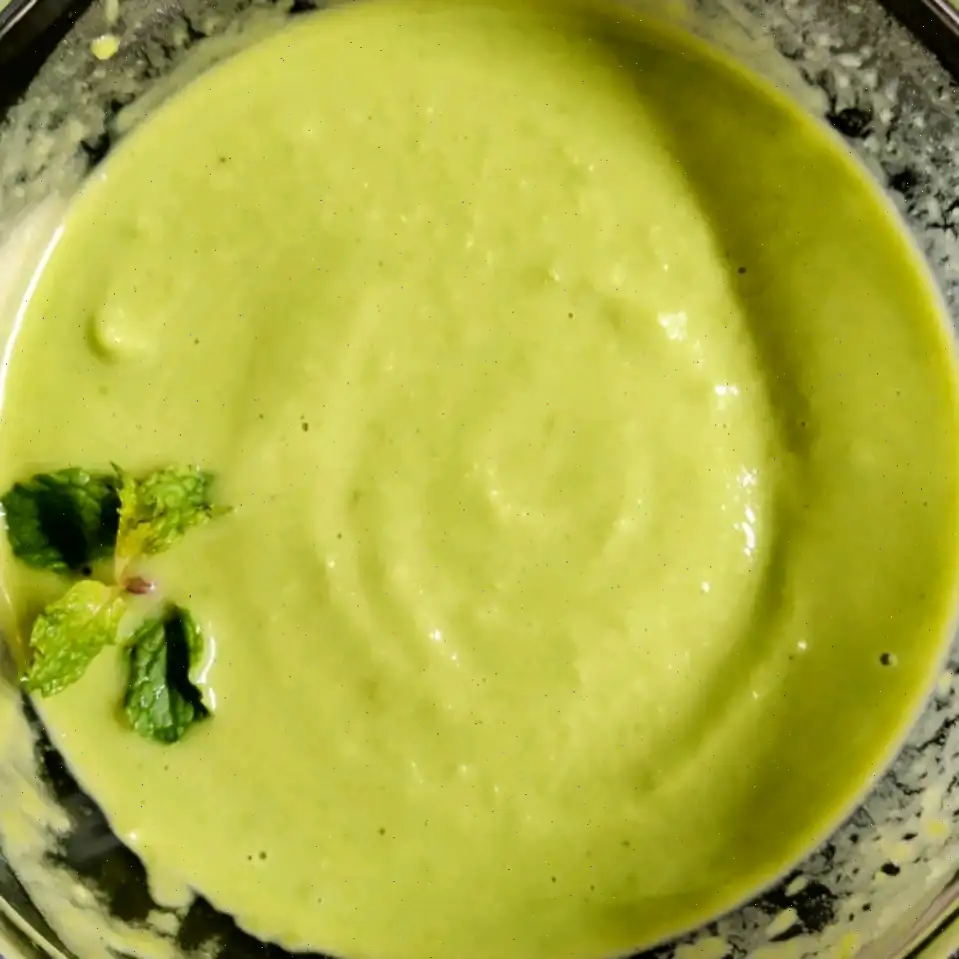
Carrot Marmalade Recipe
Ingredients
- 2 cups tap water
- 1 tablespoon grated orange zest plus 1/2 cup fresh juice (from 1 large orange)
- 2 teaspoons grated lemon zest plus 1/4 cup fresh juice (from 1 large lemon)
- 2 cups grated carrots
- 2 cups granulated sugar
- 3/4 teaspoon ground cardamom
- 1/4 teaspoon kosher salt
Directions
Step 1: Begin by gathering all the necessary ingredients. Its always easier when everything is ready to go!
Step 2: In a large saucepan, combine the water, orange zest and juice, lemon zest and juice, and the grated carrots. Stir everything together.
Step 3: Bring the mixture to a boil over medium-high heat, stirring occasionally to ensure it doesnt stick to the bottom. Once boiling, reduce the heat to medium-low and let it simmer, stirring occasionally, until the carrots are tender-crisp. This should take about 15 minutes.
Step 4: Add the sugar, cardamom, and salt to the saucepan. Stir continuously for about 30 seconds, or until the sugar is completely dissolved into the mixture.
Step 5: Allow the mixture to simmer on medium-low heat, stirring occasionally. Keep an eye on the temperature using a candy thermometer it should reach 220F (104C). This step may take 40 to 45 minutes. The mixture will begin to thicken as it cooks.
Step 6: Once thickened, skim off any foam that forms on top and discard it. This will help give your preserve a smooth texture.
Step 7: Carefully pour the hot carrot mixture into a 16-ounce jar. Make sure the jar is clean and dry before you fill it.
Step 8: Cover the jar with a lid and place it in the refrigerator. Let it cool completely, which should take at least 4 hours. You can store the preserve for up to 3 weeks in the refrigerator.
Nutrition Facts (per serving)
| Calories | 1650 |
| Total Fat | 1g (1%) |
| Saturated Fat | 0g (0%) |
| Cholesterol | 0mg (0%) |
| Sodium | 490mg (21%) |
| Total Carbohydrate | 424g (154%) |
| Dietary Fiber | 8g (27%) |
| Total Sugars | 410g |
| Protein | 2g (5%) |
| Vitamin C | 27mg (30%) |
| Calcium | 112mg (9%) |
| Iron | 1mg (6%) |
| Potassium | 748mg (16%) |
* Percent Daily Values are based on a 2,000 calorie diet. Your daily values may be higher or lower depending on your calorie needs.
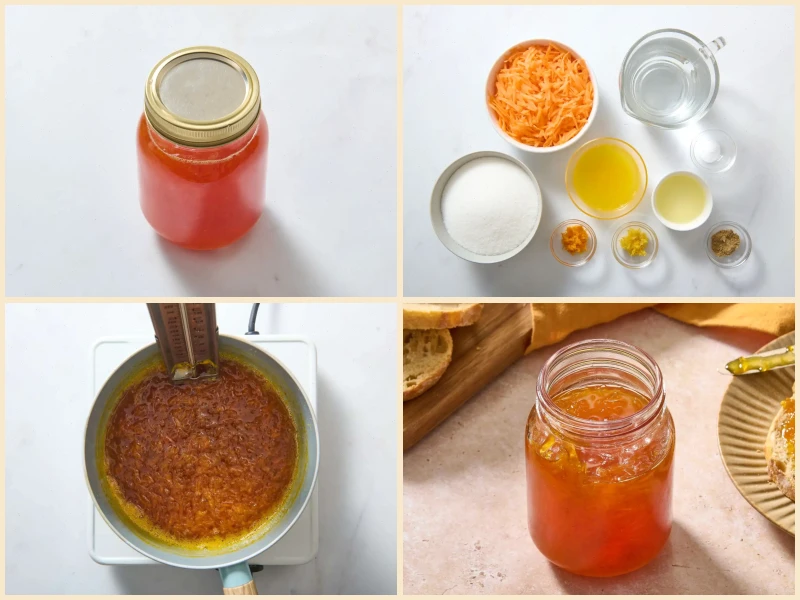
Carrot marmalade is a unique and delicious twist on the traditional fruit-based spreads. Made by cooking down grated carrots with citrus zest, juice, and sugar, it transforms into a sticky, sweet marmalade with a complex flavor profile. This recipe is not only a treat for the taste buds but also a wonderful way to preserve the flavor of fresh carrots in a new and exciting way.
Origin and History
The origins of carrot marmalade are somewhat unclear, but it is believed to have emerged in regions where carrots were abundant and commonly used in cooking. It is likely that this marmalade was developed as an innovative method of preserving carrots, which are often harvested in large quantities in certain seasons. The idea of using carrots in a marmalade format blends the tradition of fruit preserves with a savory vegetable, making it an intriguing alternative to conventional marmalades made from citrus fruits.
Regional Features
Carrot marmalade is particularly popular in parts of the United States, where the contrast of sweet and savory flavors appeals to both home cooks and chefs alike. It is also found in some Mediterranean regions, where citrus fruits such as oranges and lemons are in abundance. The balance between the sweetness of the carrots and the tanginess of the citrus zest and juice makes this marmalade perfect for pairing with a variety of dishes, particularly in warmer climates where light, refreshing flavors are preferred.
How It Differs From Similar Dishes
While carrot marmalade might seem similar to fruit preserves like orange or lemon marmalade, the key difference lies in its base ingredient. Traditional marmalade is made from citrus fruit peels and juice, with sugar added to create a thick, sweet spread. Carrot marmalade, on the other hand, uses grated carrots as its main ingredient, resulting in a smoother texture and a more subtle flavor. The addition of cardamom in this recipe gives it a unique, aromatic quality that sets it apart from other jams and marmalades.
Where Is It Served?
Carrot marmalade is a versatile spread and can be served in a variety of ways. It is often enjoyed on scones or crostini, making it a perfect addition to brunch spreads. It pairs wonderfully with cream, adding a refreshing sweetness to the dish. In some regions, it is also served as a topping for roasted meats, particularly lamb, where its sweet and tangy flavors complement the savory profile of the meat. This marmalade is also a delightful topping for pancakes or yogurt, offering a refreshing change from more traditional jams.
Interesting Facts
- Carrots are not only sweet in flavor, but they are also packed with nutrients like Vitamin A, making carrot marmalade a slightly healthier alternative to other sugary spreads.
- Carrot marmalade is often made during the spring and early summer months when carrots are in season, allowing for the freshest ingredients possible.
- This marmalade can be stored for up to three weeks in the refrigerator, making it an excellent option for preparing in advance and enjoying throughout the month.
- Some variations of carrot marmalade incorporate spices such as cinnamon or ginger, adding even more complexity to the flavor.
You can listen to this recipe in AI audio format. Simply click the play button below to listen to the content in a format that suits you best. It’s a great way to absorb information on the go!
FAQ about Carrot Marmalade Recipe
Comments
Elizabeth Williams
03/14/2024 01:27:40 PM
I followed the instructions and found that the dish was slightly overdone when it reached the recommended temperature. The taste was excellent overall, but if I were to prepare it again, I would avoid cooking it to that temperature.


